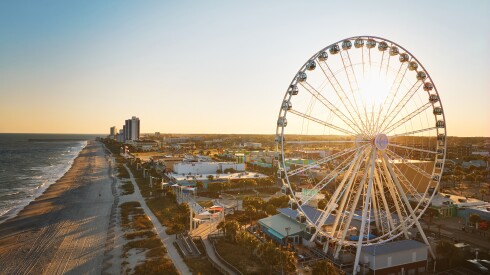In a move that could reshape how millions of visitors experience America’s most iconic landscapes, President Donald Trump signed an executive order on July 3 that alters entry fee and reservation system policies across the national park system.
At the heart of the order is a fee hike—though only for international visitors. U.S. citizens and residents will continue to pay standard entrance prices, but nonresidents will face higher fees at the gates. What that rate will be has yet to be determined—the Department of the Interior has been tasked with identifying new surcharges for daily park access as well as for multi-park and annual passes like the “America the Beautiful” pass, a program that offers annual and lifetime access to more than 2,000 federal recreation areas across the United States. The order will only apply to parks that already have entrance fees—roughly 100 of the 433 park units (which includes everything from national parks and national monuments to national historic sites and national lakeshores).
“To fund improvements and enhanced experiences across the park system, I’ve just signed an executive order to raise entrance fees for foreign tourists while keeping prices low for Americans,” Trump said during a rally in Iowa on July 3. “The national parks will be about America first.”
The revenue, Trump said, will go directly toward much-needed improvements to aging park infrastructure and will help close the system’s growing maintenance backlog. According to a budget document published by the Department of the Interior in May, the increased visitor fees could raise as much as $90 million for national parks and other federally managed public lands.
While the United States has always charged residents and nonresidents the same rate, other countries have different fee structures for their parks. The Galapágos National Park in Ecuador, for example, requires $100 from visitors, while locals pay $6 to enter.
The order also mandates a revamp of the reservation and permitting systems used in high-demand parks like Yosemite and Glacier. In a marked shift, U.S. residents will be given priority access in lotteries and reservation queues for campsites, wilderness permits, and limited-entry scenic drives.
Beyond the logistical changes, the order also repeals an Obama-era initiative aimed at expanding access to public lands among underserved and underrepresented communities and increasing the diversity of the National Park Service staff.
The executive order takes effect immediately, but the full implementation of fee hikes and reservation changes is expected to roll out over the next 12 months. The Department of the Interior is expected to issue draft rules by early fall, with public comment periods to follow.
The timing of the order comes as the National Park Service has been grappling with staffing shortages following widespread budget cuts earlier this year. According to the National Parks Conservation Association, an independent advocacy group, the Park Service has lost 24 percent of its permanent staff since January. The staffing shortfalls have resulted in reduced hours, shuttered visitor centers, and delayed maintenance in some parks this summer.








